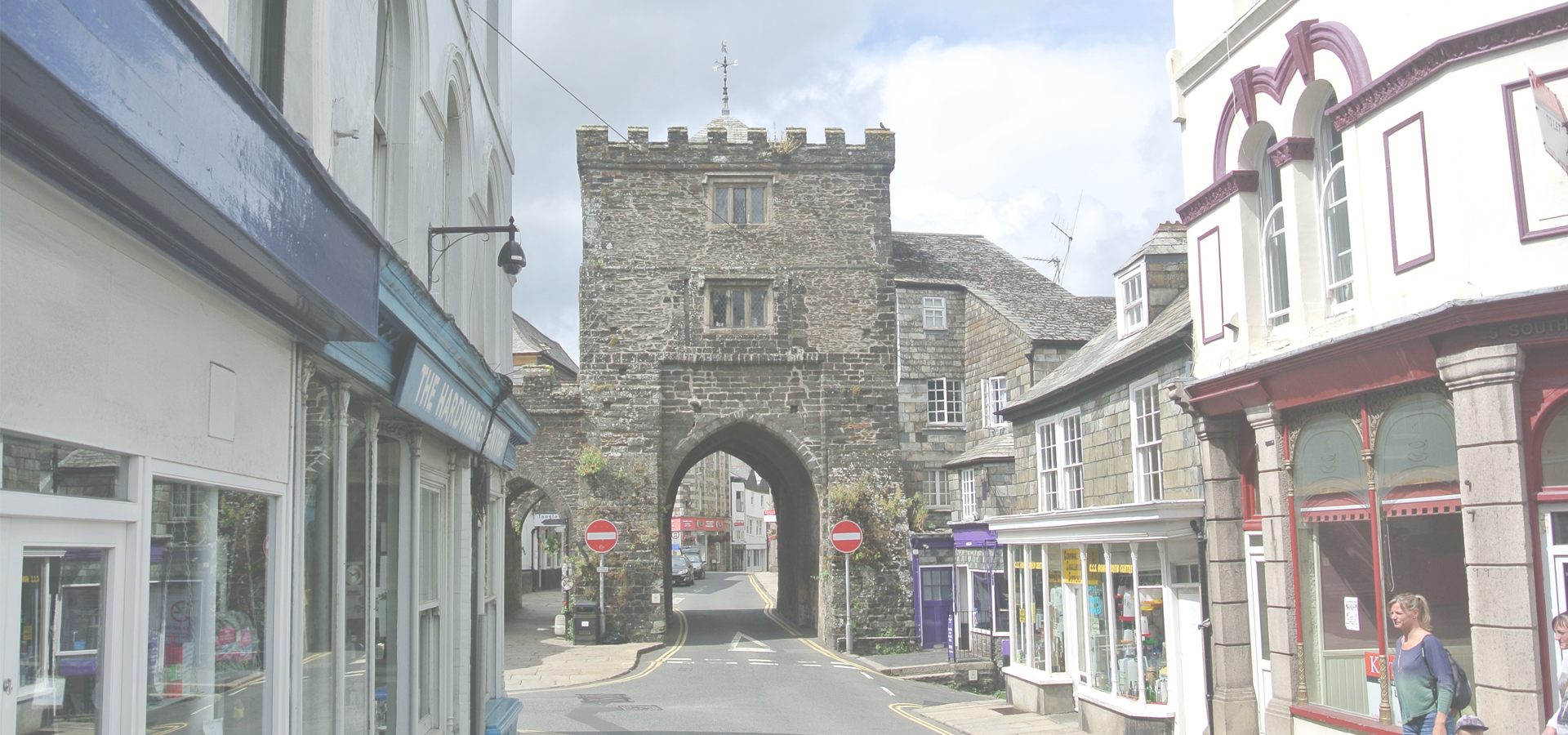Launceston, Cornwall, England, United Kingdom
🏴 Launceston is a town, ancient borough, and civil parish in Cornwall, England, United Kingdom. It is 1 mile west of the middle stage of the River Tamar, which constitutes almost the entire border between Cornwall and Devon. The landscape of the town is generally steep particularly at a sharp south-western knoll topped by Launceston Castle. These gradients fall down to the River Kensey and smaller tributaries.
The town centre itself is bypassed and is no longer physically a main thoroughfare. The A388 still runs through the town close to the centre. The town remains figuratively the "gateway to Cornwall", due to having the A30, one of the two dual carriageways into the county, pass directly next to the town. The other dual carriageway and alternative main point of entry is the A38 at Saltash over the Tamar Bridge and was completed in 1962. There are smaller points of entry to Cornwall on minor roads.
Launceston Steam Railway narrow-gauge heritage railway runs as a tourist attraction during the summer months. It was restored for aesthetic and industrial heritage purposes and runs along a short rural route, it is popular with visitors but does not run for much of the year.
Launceston Castle was built by Robert, Count of Mortain (half-brother of William the Conqueror) c. 1070 to control the surrounding area. Launceston was the caput of the feudal barony of Launceston and of the Earldom of Cornwall until replaced by Lostwithiel in the 13th century. Launceston was later the county town of Cornwall until 1835 when Bodmin replaced it.
Two civil parishes serve the town and its outskirts. Three electoral wards include reference to the town, and two ecclesiastical parishes serve the former single parish, with three churches and a large swathe of land to the north and west part of the area.
Launceston's motto "Royale et Loyale" (English translation: Royal and Loyal) is a reference to its adherence to the Cavalier cause during the English Civil War of the mid 17th century.
Economy The outskirts of Launceston host some large retail businesses with convenience, niche and fine weather tourist-catering commerce in the town centre. The three main industrial estates are Pennygillam, Scarne and Newport.
Launceston is located on the A30 trunk road into Cornwall and has a number of transport based business mainly located in Pennygillam Industrial estate. A major local business is the DS Smith packaging products manufacturing plant. Launceston is located in predominately rural area and has a number of business dedicated to supporting the surrounding rural economy.
The town has several restaurants, cafés, takeaways and a number of pubs. There are fewer pubs than in the Victorian era, a national trend with the larger ones tending to survive which specialise in their food, others of which provide live music events on a weekly basis.
A tucking mill was established in the 15th century by the Flemings in the north of the town (Newport), water-powered, continuing in use for corn until 1968. A manuscript left by Richard Robbins (died 1910) records eight tanneries in the town in the 19th century. A mechanics' institute was founded in 1847 at the Central Subscription Room. The gasworks was established as early as 1834 by Waygood & Porter of Beaminster.
The Duchy Originals company first manufactured its products in 2006 by opening a factory in Launceston making sweet and savoury pastry products but made a loss of £447,158 in the financial year 2006/07. During 2009 the bakery in Launceston was sold at a loss, contributing to the Duchy Originals company making a loss for 2009 - 10.
The Natural Fibre Company (TNFC) is a British wool mill based in Launceston and is the only small-scale full range textile mill in the UK. The main focus of the business is to add value to naturally coloured raw fleece which is bought from farmers, smallholders and rare sheep breeders.
Transport The closest main-line railway stations to Launceston are Bodmin Parkway (24.1 miles by car) and Plymouth (25.5 miles). There are regular bus services to Plymouth and Exeter St David's railway station.
Launceston, Cornwall, England, United Kingdom

Launceston has a population of over 9,216 people. Launceston is situated 31 km north-west of Plymouth.
Twin Towns, Sister Cities Launceston has links with:
🇫🇷 Plestin-les-Grèves, France🇨🇿 Ústí nad Labem 50.65
🇩🇪 Euskirchen 50.66
🏴 Carmarthen -4.316
🇧🇫 Bobo Dioulasso -4.295
🇧🇫 Bobo-Dioulasso -4.283
🏴 East Kilbride -4.167
Locations Near: Launceston -4.354,50.635
🏴 Plymouth -4.142,50.37 d: 33.1
🏴 Bodmin -4.718,50.466 d: 31.9
🏴 Bideford -4.207,51.02 d: 44
🏴 Barnstaple -4.06,51.08 d: 53.6
🏴 Newton Abbot -3.61,50.529 d: 53.8
🏴 Truro -5.051,50.263 d: 64.4
🏴 Exeter -3.533,50.723 d: 58.7
🏴 Paignton -3.55,50.433 d: 61.1
Antipodal to: Launceston 175.646,-50.635
🇳🇿 Dunedin 170.474,-45.884 d: 19363
🇳🇿 Christchurch 172.617,-43.517 d: 19191.2
🇳🇿 Canterbury 171.58,-43.543 d: 19168.9
🇳🇿 Invercargill 168.373,-46.413 d: 19303.4
🇳🇿 Queenstown 168.658,-45.033 d: 19203.3
🇳🇿 Wellington 174.767,-41.283 d: 18973
🇳🇿 Hutt 174.917,-41.217 d: 18966.3
🇳🇿 Lower Hutt 174.917,-41.217 d: 18966.3
🇳🇿 Upper Hutt 175.05,-41.133 d: 18957.5